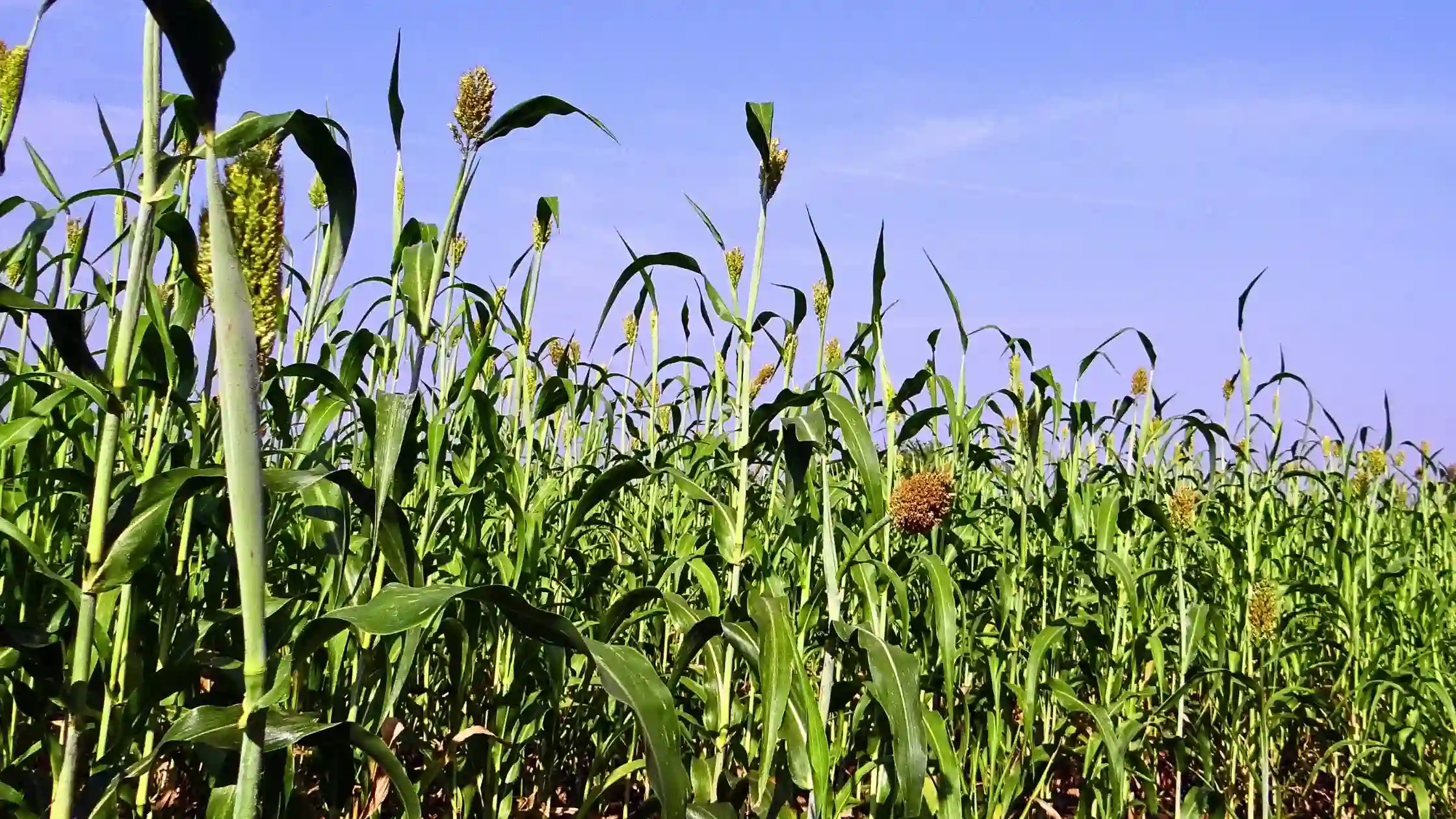Sorghum Millet: Benefits, Nutrition, Uses, Side Effects & More
- Published on:
- Last update: 27 March 2025

Our present day kitchens are rediscovering the health advantages of Indian grains, so let us explore one of the maximum nutritious options: Jowar, also called Sorghum. Sorghum millet’s reputation as a nutritious grain is now restored as it has become one of the grains to be rediscovered in the recent times. Sorghum is not just any grain but it is a brilliant source of top-quality proteins plus essential minerals i.e. calcium, magnesium, iron, and B vitamins & polyphenol compounds too.
As well, it is a very versatile grain which contains several varieties of health benefits. Besides, it provides a great supply of fibre, antioxidants and essential vitamins and nutrients with the added fact that it also contains gluten and therefore meets the dietary needs of those with dietary restrictions. Whether you want better digestion, proper blood sugar level, or heart support, by adding Sorghum millet to your diet can be a great and flavorful move.
What is Sorghum Millet?
Sorghum millet, generally referred to as Sorghum, is a gluten-free cereal grain that lines its roots back to Africa. While it is the 5th most produced crop in the world, millets such as Sorghum have historically been an important subsistence food for humans that date back almost 5,000 years earning them the nickname of the ‘King of Millets’. Known by various names such as milo, great millet, Indian millet, and jowar, this versatile grass plant has remained prominent throughout the centuries.
Types of Sorghum Millet
There are numerous methods wherein Sorghum millet is used in food products. In addition to eating it as a food, it is able to be added to baked items and even popped like popcorn.
- Whole grains: You can cook it like rice or quinoa since it is unprocessed and chewy. From pilaf to salad, it forms a nutritious base for various dishes.
- Pearled grain: The texture of pearled Sorghum is slightly softer than that of whole grain since it lacks the bran layer. This is the most favourite options of them who have a need to put less time and a milder taste.
- Popped Sorghum: As for the microwaveable and stovetop roasted Sorghum millet, they can be treated the same as popcorn. Whether you are taking them on their own or use them to season your trail mixes and snack bars, they are an appropriate way to get a quick, healthy snack.
- Flour: Whether you use this flour as grain or white, Sorghum millet flour is a great alternative for the wheat flour which can also be useful in gluten-free recipes. Numerous baked goods are produced including pancake, bread, muffin, and cookies.
- Bran: Antioxidants and fibre of Sorghum millet make them a wonderful ingredient in smoothies, granola, and breakfast bowls or in baked goods.
- Flaked Sorghum: The Cracked Sorghum millet consist of granulated ingredient similar to what are already in instant oatmeal. It goes extremely well when it is added to granola to get a crunchy bite.
- Syrup: The delicious, slightly tart taste of Sorghum syrup gives baking and cooking a versatility of sweetness. When baking goods and savoring dishes are concerned, it can be easily replaced by corn syrup, maple syrup, honey or sugar.
A versatile choice for cooking a variety of different cuisines and also provides health benefits, Sorghum millet is a key ingredient in modern cuisine. On top of that, Sorghum millet is a multipurpose plant based ingredient therefore making it as a go to ingredient for vegetarians and vegans.
Buy Healthy Ready to Eat Millet Snacks
Sorghum Millet Nutritional Value (per 100g)
Nutritionally dense Sorghum is often underrated. 100 grams of Sorghum millet provide;
- Calories: 329
- Protein: 11 grams
- Fat: 3 grams
- Carbohydrates: 72 grams
- Fiber: 7 grams
The following micronutrients can also be found in Sorghum millet;
- vitamin B1 (thiamin)
- vitamin B6
- copper
- iron
- magnesium
- phosphorus
- potassium
- selenium
- zinc
Benefits of Sorghum Millet
It is known that Sorghum millet is associated to numerous health advantages, such as:
Anti-inflammatory properties
One should not forget that like Sorghum millet can be of great use to people who have some inflammatory conditions as the anti-inflammatory element it possesses is of central importance for this condition.
Efficacy as an anticancer agent
On the other side, this research way demonstrates that some compounds of Sorghum that have anticancer effects. However, more studies are had to verify these claims.
Losing weight
Comparatively Sorghum millet provides additional fibre which gives you the chance to reduce weight with the help of satiety and the less calories you consume.
Safe for celiac disease patients
Sorghum millet has a gluten-celeiac incompatibility and so it is an edible grain for people with gluten intolerance.
Symptoms of diabetes are reduced
With its low glycemic index and high fibre content, Sorghum millet may help stabilise blood sugar levels, reducing diabetes complications.
Uses of Sorghum Millet
Many culinary possibilities are available with Sorghum millet in the kitchen.
- Whole Grain: This can be made like rice or quinoa or can be used to provide the base of meals. This is a nutritious grain.
- Flour: Deserts inclusive of bread, muffins, desserts, and truffles are made to be gluten-free by using grinding into flour.
- Porridge: Many human beings adhere to their conventional ingredients to make this porridge, the usage of spices and sweeteners and regularly milk or water to soften it.
- Beverages: It is fermented into traditional African beverages which encompass Sorghum beer or used as a base for non-alcoholic liquids.
- Feed for animals: It carries high level of nutrients, making it vital part of animal feed.
Sorghum Millet Side Effects
- Allergy to grasses and to grass pollen is very common, and unfortunately, a kind of grass, Sorghum millet, can from time to time trigger hypersensitive reactions in some individuals.
- Sometimes, the symptoms of Sorghum millets hypersensitive reaction begin within minutes of consuming this grain. These symptoms may be hives and flushed/pale skin, a drop in blood pressure, swelling of tongue or throat, difficulty with breathing, weaken pulse, and stomachache including nausea and vomiting. The patient can even faint in a severe case.
- There are some other symptoms of allergy to Sorghum consumption, which are tingling or itching around the mouth and the lips; swelling in and around the throat, the abdomen, and the eyes; nausea, vomiting, and fainting. Certain Individuals, on the other hand, may suffer from digestive discomforts that comprise of bloating or gas especially when Sorghum millet is not prepared properly.
FAQs on Sorghum Millet
What is sorghum used for?
Among its many uses, Sorghum millet is consumed by humans, used as animal feed, and produced for the production of ethanol.
Why is Sorghum called the King of Millets?
Because of its nutritional value, durability, and versatility in cooking, Sorghum is often called the King of millets.
Is Sorghum also known as jowar?
Yes, in many parts of the world, especially in India and Africa, Sorghum is known as jowar.
Share this post:




